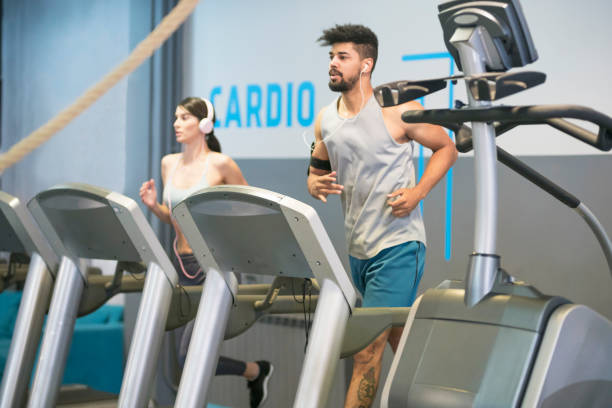Whether recovering from injury, rebuilding strength after surgery, or simply aiming to boost overall fitness, training smart is key to sustainable progress. The CDC recommends a total of 150 minutes of moderate activity per week, a goal that Zone 2 cardio can help achieve. This often-overlooked form of low-intensity aerobic exercise accelerates healing, strengthens the heart, and fuels endurance without placing excessive stress on the body.
What Is Zone 2 Cardio?
Zone 2 cardio refers to exercising at a heart rate that’s approximately 60–70% of your maximum. In this zone, the body primarily burns fat for fuel, and you can comfortably maintain a conversation. For most, this feels like a brisk walk or light jog—intense enough to get blood flowing but gentle enough to minimize strain. This moderate intensity, combined with a low risk of joint stress, makes Zone 2 cardio accessible to a wide range of people—from aging adults and those managing chronic conditions to individuals recovering from cardiac events (always with medical clearance).
Research highlights several key benefits of training in Zone 2. It strengthens heart function and is linked to improved mitochondrial efficiency and size, which enhances your cells’ ability to produce energy. Zone 2 also boosts fat metabolism, supports sustained energy release, and promotes a positive mood through endorphin release. Additionally, it lowers the risk of overtraining and helps speed recovery between workouts. Together, these benefits form a strong foundation for improved health, chronic disease prevention, successful rehabilitation, and long-term athletic performance.
🧠 Why It Works for Rehab and Athletes
Zone 2 cardio offers a unique blend of benefits that make it ideal for both physical therapy patients and athletes recovering from injury:
| For Physical Therapy Patients: | For Athletes: |
| Promotes Circulation: Enhances blood flow to injured tissues, accelerating healing. | Preserves Aerobic Base: Maintains cardiovascular fitness without risking re-injury. This is critically important when trying to return to competition later in the rehab process. |
| Improves Cellular Energy: Boosts mitochondrial function, which supports tissue repair and energy levels. | Enhances Recovery Between Sessions: Low-intensity cardio improves metabolic waste clearance and speeds up muscle recovery. |
| Reduces Pain and Inflammation: Gentle movement helps regulate inflammatory markers and ease discomfort. | Builds Endurance Foundation: Prepares the body for higher- intensity training once cleared. |
| Supports Mental Health: Movement releases endorphins and reduces anxiety, which is crucial during recovery. |
Sample Zone 2 Cardio Workout Plan
Here’s a simple weekly plan designed for someone recovering from injury or surgery.
Naturally, only start any exercise program with proper clearance from their healthcare
provider. It’s adaptable for both physical therapy patients and athletes. Before you start you need to calculate your target heart rate range.
- Step 1
- Calculate Max HR = 208- (0.7xAge)
- Uses Tanaka method
- Step 2
- Zone 2 range = 60-70% of max HR
- Low end of range = Max HR x 0.6
- High end of range = Max HR x 0.7
| Day | Activity | Duration | Intensity Notes |
| Monday | Brisk walk or stationary bike | 30 minutes | Keep heart rate in Zone 2 (60–70% max HR) |
| Tuesday | Rest or light stretching | — | Focus on mobility and recovery |
| Wednesday | Swimming or elliptical | 30–45 minutes | Maintain conversational pace |
| Thursday | Rest or PT exercises | — | Follow therapist’s guidance |
| Friday | Outdoor walk or treadmill | 45 minutes | Slight incline optional for athletes |
| Saturday | Light hike or rowing machine | 30–60 minutes | Stay in Zone 2, monitor fatigue |
| Sunday | Rest or yoga | — | Emphasize breath and relaxation |
˙9.„• Tip for General population: Other exercise alternatives include aquatic aerobics, recumbent cycling, rowing, or dancing
•.˙9„ Tip for Athletes: Use a heart rate monitor or smartwatch to stay in Zone 2. For physical therapy patients, perceived exertion (a 4–6 out of 10 effort) is a good guide.
🧭 Getting Started Safely
- ⬛ Consult Your PT or Physician: Always get clearance before starting.
- Always warm up and cool down for each workout to avoid injury.
- Choose any rhythmic activity—walking, stationary cycling, pool walking, or dance.
- Use a talk test: able to converse but not sing.
- C*˛ Listen to Your Body: Fatigue, pain, or dizziness are signs to slow down or stop.
- ⬛/# Track Progress: Use a journal or app to monitor how you feel after each session. Start with workouts of 10–15 minutes and gradually increase the duration of each workout.
🌟 Final Thoughts
Zone 2 cardio isn’t flashy—but it’s foundational. For physical therapy patients, it’s a safe way to reintroduce movement. For athletes, it’s a strategic tool to maintain fitness while healing. Zone 2 training is the bedrock of healthy metabolism, cardiovascular endurance, injury prevention, and even mental health, with effects measurable at every fitness level. Whether you’re walking laps around your neighborhood or gliding through water, Zone 2 training helps you recover smarter, not harder.







